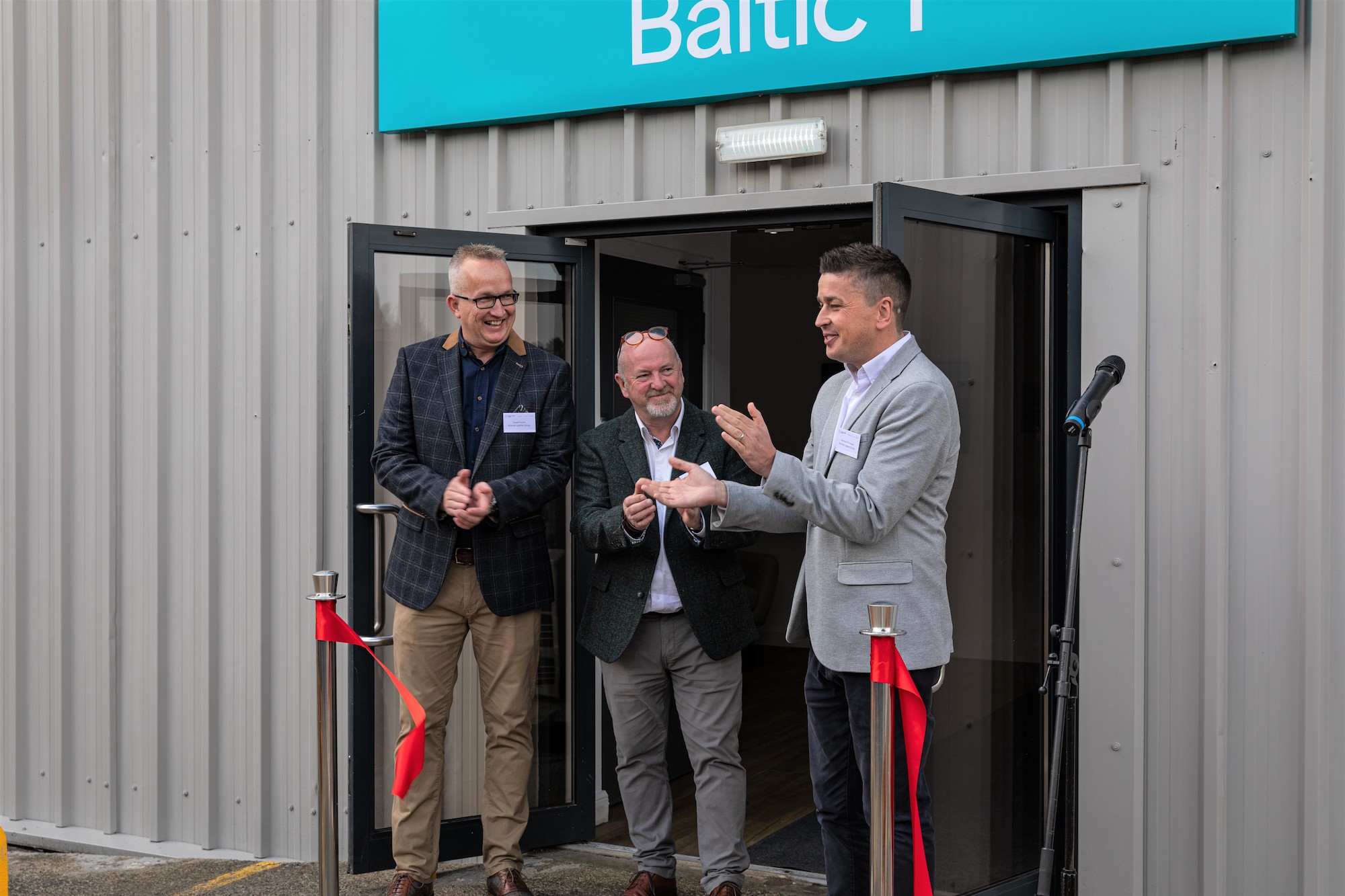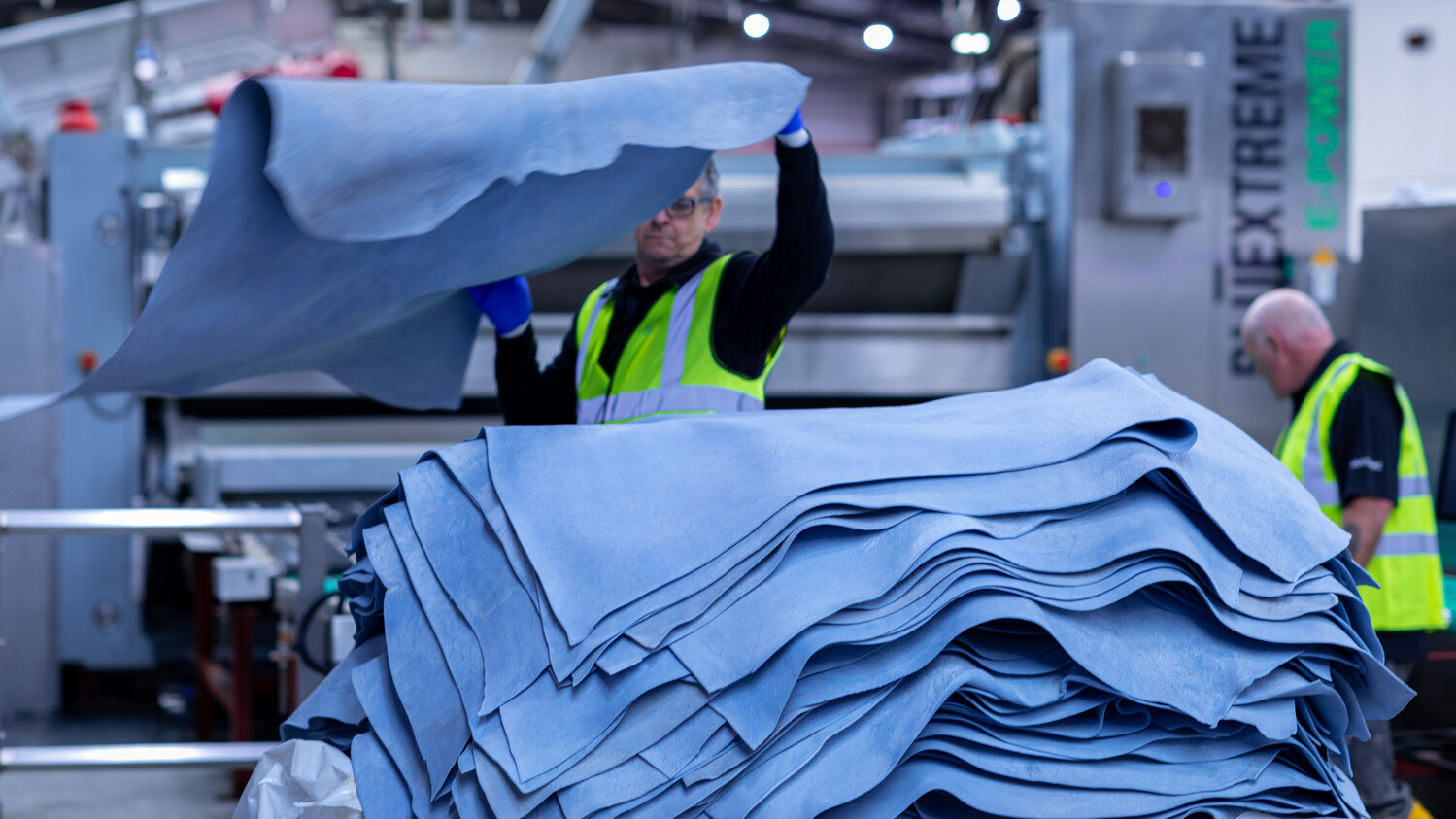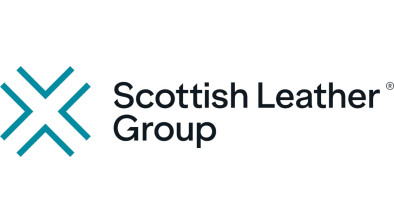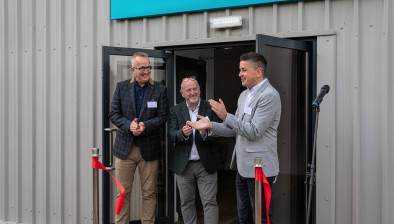Scottish Leather Group unveils £14m ‘super tannery’

Pictured: Ribbon cutting of the new facility
Scottish Leather Group has inaugurated a £14 million “super tannery” facility where it aims to set new industry standards for sustainable leather production.
The landmark project, which has taken seven years to deliver, is part of Scottish Leather Group’s ongoing commitment to raising standards in quality, sustainability and traceability. The business is claims to produce the world’s lowest carbon leather.
The new facility, based at Bridge of Weir, near Paisley, was constructed with a goal of low-impact production and incorporates innovative hide processing technology that ensures consistency of quality while further enhancing environmental performance. Compared with the group’s previous equipment the super tannery will reduce energy and water use by 82% and 42% respectively.
Scottish Leather Group, which encompasses Bridge of Weir Leather, Lang and Muirhead, is a manufacturer of leather for the global automotive, aviation, rail, furniture, and luxury goods sectors. Among the global brands it supplies are Aston Martin, Jaguar Land Rover (JLR) and British Airways.
The super tannery is the latest in a series of investments by the group in its world-class facilities. Previous initiatives include a Thermal Energy Plant (TEP), which ensures that the company minimises disposal and turns waste into heat, and its Water Treatment & Recycling Plant (WTRP), where water used throughout the processes is recovered.
The recruitment and retention of skilled workers is critical to the super tannery’s successful operation. Scottish Leather Group employs more than 750 people.
Nicholas Muirhead, CEO of Scottish Leather Group, said: “Since 2003, we have continuously invested in strategic initiatives designed to optimise and improve productivity, quality and sustainability.
“The new super tannery is the latest significant milestone on that journey, a state-of-the-art facility that builds on the considerable savings we have already made in reduced energy and water use, improving our efficiency, and futureproofing our production. This will provide our customers with further evidence of our position as the leader in the supply of the world’s lowest carbon leather.”
Dr Warren Bowden, head of innovation & sustainability at Scottish Leather Group, said: “Over the last 20 years, we have pioneered and patented circular manufacturing processes that minimise waste to landfill and radically reduce our carbon footprint, with initiatives such as our Thermal Energy Plant [TEP] and Ultrafiltration plant.”
“The super tannery builds on these sector-leading actions, providing a step change in productivity and environmental savings. Our sustainability journey is continuous, and this new facility will play a vital role in enabling us to achieve net zero leather production. We are committed to net zero for our own operations (Scope 1 and 2) by 2025 – ahead of Scotland’s net-zero ambitions – and delivering zero process waste to landfill by the same year, further fortifying our sustainability pledges.”
Alongside the super tannery launch, Scottish Leather Group published its 2023 Environmental, Social and Governance (ESG) report.

The report charts the group’s progress towards its ambition of achieving net zero leather production by 2025 and how the business can directly support its customers’ sustainability targets.
Among the key achievements it highlights are a 90% reduction in the carbon intensity of its leather over the last 20 years, 100% traceability of raw materials and 77% of waste recycled in 2022.
It also provides details of the group’s latest industry accolades including maintaining a sought-after ‘Gold’ award from global standards organisation, the Leather Working Group, in recognition not only of its environmental performance, but also its people, business structure, and accomplishments in key areas including business resilience and health and safety.
Further notable accreditations include endorsement of the group’s working practices by the Supplier Ethical Data Exchange (SEDEX), which assures ethical trading and compliance with international labour standards, while the group’s track record in health & safety was recognised for the 12th consecutive year by Royal Society for the Prevention of Accidents (RoSPA) Gold awards.
In a first for the group, an independent ESG analysis was commissioned to provide benchmarking for future evaluation and identify, and address, any gaps. This exercise will be repeated periodically to support continual progress.










